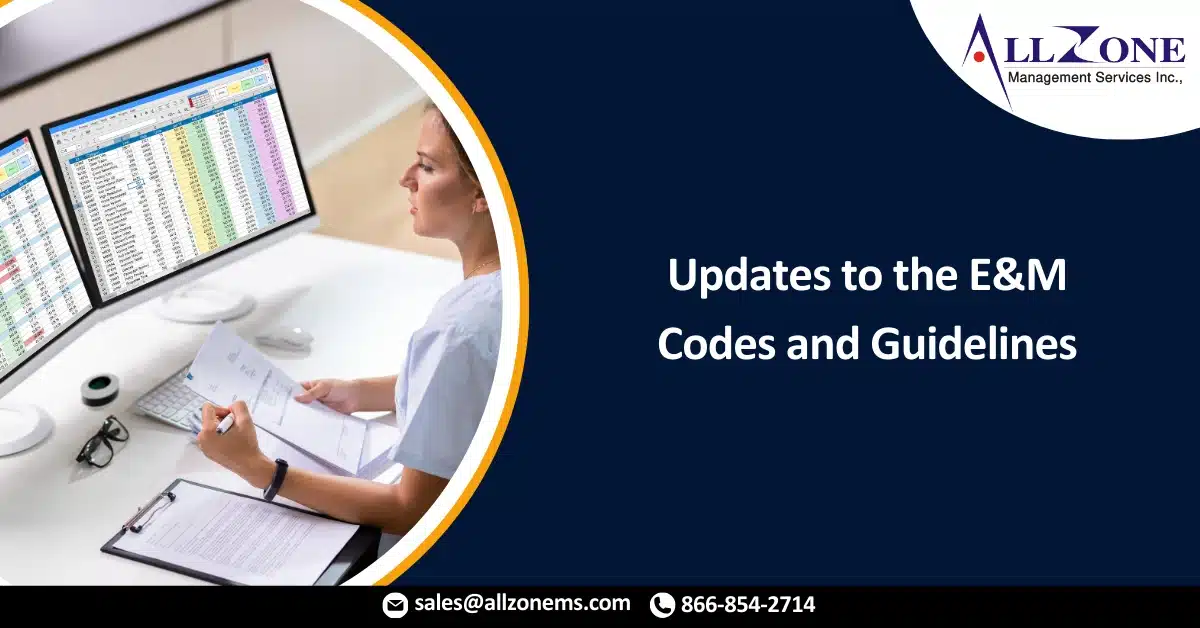The E&M categories that will undergo revision in 2023 encompass:
- Inpatient and observation care services.
- Consultations – both outpatient and inpatient
- Emergency department services
- Nursing facility services
- Home and residence services
- Prolonged services
Throughout the upcoming months, a dedicated focus will be placed on each E&M category, delving into the revisions and changes in guidelines. Alongside the E&M category revisions, the specifics of modifications made to the components of medical decision-making and time allocation will also be outlined.
Within the revenue cycle, documentation integrity and coding professionals play a vital role in ensuring that the E&M level of service accurately represents the care provided during the visit. This involves assigning or validating the E&M codes based on provider documentation and facilitating essential provider education – all of which constitute crucial links in the revenue cycle.
Services for Patients Admitted to Hospitals and Under Observation.
- Both the categories and E&M codes for Hospital Observation Services are slated for removal. This includes the deletion of E&M codes 99217, 99218-99220, and 99224-99226.
- Categories and E&M codes for Hospital Inpatient services have undergone revision and received a new title:
- Services encompassing both Hospital Inpatient and Observation Care.
- E&M codes 99221-99223, 99231-99233 and cpt code 99238, 99239
- Services for observation or inpatient care, which involve admissions and discharges on the same date, remain unchanged. E&M codes 99234-99236 continue to apply.
Furthermore, substantial changes have been introduced to the criteria for assigning E&M levels. The collaborative effort of the American Medical Association (AMA) CPT® editorial workgroup and the Centers for Medicare & Medicaid Services (CMS) aims to streamline E&M services, alleviating administrative burdens and eliminating unnecessary documentation not directly relevant to patient care.
As part of this objective, the history and physical exam (H&P) will no longer be pivotal components in determining E&M level. Guidelines stipulate that a medically appropriate H&P, as decided by the physician or advanced practice provider (APP), should be documented. The level of service will be primarily based on medical decision-making or total time, serving as the sole criterion for level of service selection. These modifications align with the changes made to New and Established Office and Other Outpatient Services that became effective on January 1, 2021.
The official wording for the E&M categories for Hospital Inpatient and Observation Care Services is as follows: “… which requires a medically appropriate history and/or examination and straightforward or low, moderate, or high level of medical decision making within the three levels of service for initial or subsequent care.”
Moreover, the term “floor/unit time” has been revised to now read as “total time on the date of the encounter.”
The levels of Medical Decision Making (MDM) comprise three key elements:
- The quantity and intricacy of problems addressed during the interaction.
- The volume and/or intricacy of data to be scrutinized and analyzed.
- The potential risk of complications and/or morbidity or mortality tied to patient management.
While these three elements are recognizable, they have been enhanced with additional language to better mirror the actual responsibilities of the physician or advanced practice provider (APP). Similar to previous years, the level of medical decision making is determined by satisfying at least two out of the three MDM elements.
For coding purposes, the concept of time for these services has been redefined as the overall time on the date of the encounter. This incorporates both face-to-face interactions with the patient and/or family/caregiver, as well as non-face-to-face time personally invested by the physician or APP on the day of the encounter. This definition encompasses time irrespective of the physician or APP’s physical location.
With the shift from unit/floor time to total time, the time ranges associated with different codes have been adjusted. It’s important to thoroughly review and integrate the concept of total time and the associated ranges for a specific code into your education and learning process.

